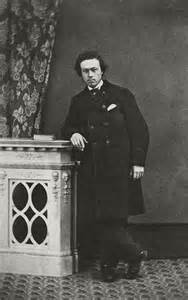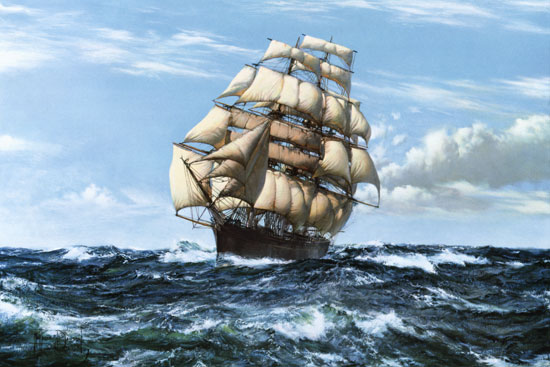READING PRACTICE
Read the article below aloud and record yourself.
Welcome to GREENWICH
Welcome to Greenwich, a World Heritage Site and home of Greenwich Mean Time and the Meridian Line. Our famous landmarks include Cutty Sark, the National Maritime Museum, the Royal Observatory, and Sir Christopher Wren’s Old Royal Naval College.
Enjoy a walk along the River Thames or in Greenwich Park before eating in one of Greenwich’s restaurants. Greenwich shopping is excellent, with plenty of quirky, independent shops and street markets.
There’s too much to do in one day so why not stay overnight?
Only 20 minutes from Central London, Greenwich is easy to reach by Docklands Light Railway, tube, rail, bus or riverboat.
Our Greenwich map will help you find your way to all the Greenwich attractions, accommodation and places to eat and drink.
It’s always a great time to visit Greenwich and browse the museums and markets, wander around Greenwich Park and relax in a riverside pub.
Enjoy your visit!
Reading Practice 2 Welcome.MP3
A World Heritage Site
The ensemble of buildings at Greenwich and their landscape setting, including the Royal Park are a potent architectural symbol of English artistic, scientific and other institutional endeavour, notably from the 17th to late 19th centuries. The Queen's House by Inigo Jones was the first Palladian building in England, while the Old Royal Naval College designed principally by Sir Christopher Wren and Nicholas Hawksmoor, is a confident expression of the ‘English Baroque’ style .
Greenwich Park, as re-planned to a design attributed to Andre Le Notre in the 1660s, surrounds the Royal Observatory which was the first purpose-designed scientific building in England. It was for over 250 years the national centre for research into positional astronomy, time-keeping and early Solar and magnetic astronomy. Its navigational and temporal role led to the Greenwich Meridian (Longitude 0°) being agreed as the Prime Meridian of the World in 1884.
Having held a former royal palace from the 15th century to around 1670, (of which the Queen’s House is the last standing building) the site and its buildings have evolved through many changing roles. The Royal Hospital for Seamen was established (1696 -1869), its associated school (1712-1933), the Royal Naval College (1872– 1998), the former Dreadnought Seamen's Hospital (established ashore from 1870 to the 1980s), and the National Maritime Museum (since 1937).
The physical and institutional development of ‘historic Greenwich’ is inseparable from key periods of Britain’s early modern history, British maritime power (naval and mercantile), related science, welfare, education and culture from the 17th century on. That role continues today in the broadest sense with all the major World Heritage Site partners including Greenwich Hospital (the historic charity, which remains primary freeholder under the Crown) committed in principle to continuing appropriate enhancement of the overall site.
Maritime Greenwich comprises the historic town centre, Royal Park and related institutional buildings, and was inscribed by the World Heritage Convention in 1997. Maritime Greenwich has joined a unique club of the most important and natural places on earth - special places which people are encouraged to visit and explore now and for generations to come.
Follow the link below to find out more about Greenwich’s magnificent architecture and the part that has had to play in its inscription as a World Heritage Site.
See more at:
Reading Practice 2 World Heritage.mp3
THE CUTTY SARK
Cutty Sark reopened in April 2012, beginning a new chapter in the extraordinary life of the last surviving tea clipper, the fastest and greatest of her time. She is a living testimony to the bygone, glorious days of sail and, most importantly, a monument to those that lost their lives in the merchant service.
Venture aboard and beneath one of the world’s most famous ships. Walk along the decks in the footsteps of the merchant seamen who sailed her over a century ago. Explore the hold where precious cargo was stored on those epic voyages then marvel as you balance a 963-tonne national treasure on just one hand.
Weekly talks on the history of Cutty Sark
Each Monday, a talk relating to the history of Cutty Sark will take place on board the ship. No extra charge applies, once in possession of a valid Cutty Sark entry ticket. Ask staff for more details on the day. Subject to cancellation.
History
Cutty Sark has travelled across the world, sailing under both the Red Ensign and the Portuguese flag, visiting every major port in the world through the course of her working life. In admiration of her beauty and in recognition of her fame, she was preserved for the nation by Captain Wilfred Dowman in 1922. Since then, the old clipper has been berthed in Falmouth and Greenhithe, finally arriving at her current resting place in Greenwich in 1954.
History of construction and fabric
Construction
On the afternoon of Monday 22 November 1869, a beautiful little clipper ship of 963 tons gross was launched at Dumbarton on the River Leven. On that day, she was given a name that was to become renowned throughout the seafaring world.
Jock Willis
Cutty Sark was built for John 'Jock' Willis, a seasoned sailing ship master who had taken over his father’s firm of ship owners in the port of London. Here he became better known as "White Hat Willis" because he always wore a white top hat. His ambition was for Cutty Sark to be the fastest ship in the annual race to bring home the first of the new season's tea from China.

Hercules Linton
The ship was designed by Hercules Linton, a partner in the Dumbarton firm of Scott & Linton. It is believed that he moulded the bowlines of Willis's earlier vessel the Tweed into the midship attributes of Firth of Forth fishing boats, creating a beautiful new hull shape that was stronger, could take more sail, and be driven harder than any other.
The company had never built a ship of this size before and ran into financial difficulties, eventually going bankrupt before the ship was completed. The final details of the fitting out had to be completed by William Denny & Brothers, Scott & Linton’s landlords and the guarantors for the completion of the work on the original contract.
The ship was towed to Greenock for final work on her masts and rigging. She was then brought to London to load her first cargo for China.
Cutty Sark is 280ft (85.4m) long overall and her beam measures 36ft (11m). Her moulded depth is 22.5ft (6.7m) and she weighs 963 tons (978.5 metric tonnes) gross. The height of the main mast from the main deck to the top is 152ft. Find out more in our facts and figures page.
Cutty Sark facts and figures
Name of ship: Cutty Sark
Date of launch: 22 November 1869
Built by: Scott and Linton, Dumbarton, Scotland
Type of hull construction: Composite Clipper Ship
Built for: John Willis, Willis & Sons
Cost: £16,150
Gross tonnage: 963 tons
Net tonnage: 921 tons
Sail area: 32,000 sq. ft. (2,976 sq. m)
Number of sails: 32 sails
Rigging: 11 miles
Length: 212.5ft (64.8m)
Length overall: 280ft (85.4m)
Beam: 36ft (11m)
Registered depth: 21ft (6.4m)
Moulded depth: 22.5ft (6.9m)
Height of main mast: 152ft (47m)
Top speed: Over 17 knots.

History of fabric
Cutty Sark was a working cargo ship, enduring high seas and heavy weather, from 1869 until 1922. Throughout her working life, numerous repairs and alterations were carried out to the vessel to ensure she continued to perform her function effectively and safely.
Even after she ceased being a working vessel, modifications were made to the ship, for example to facilitate visitor access when she came to Greenwich in the 1950s.
© 2014 National Maritime Museum. All rights reserved."
Now listen to your recorded version of this article. Try again and see if you can improve your pronunciation.
Reading Practice 2 The Cutty Sark.mp3
©SCG Language Tutorials 2014 www.scglanguagetutorials.com
SCG LANGUAGE TUTORIALS for English grammar and vocabulary tutorials and analysis of
UCAS applications and other documents, for students of English as
a second language [ESL] and other British qualifications


